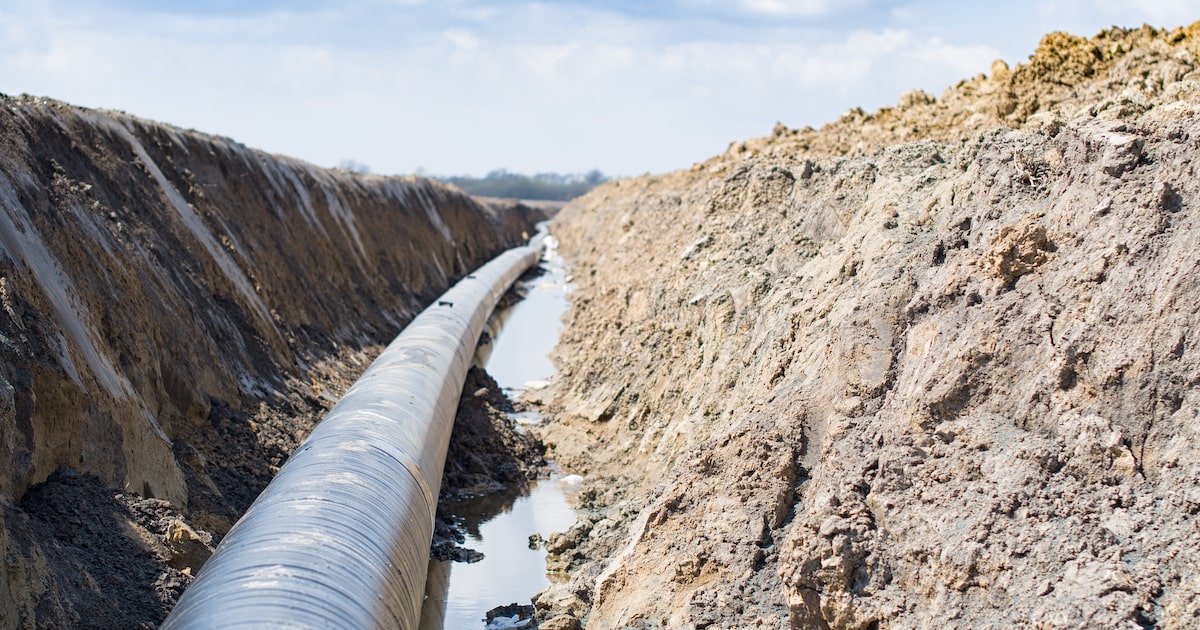
In part one of this blog series, we explored the importance of mitigating pipeline corrosion throughout the carbon capture, transportation and storage (CCTS) process. This included an overview of the three main stages of the CO₂ lifecycle, as well as the devastating impact that pipeline corrosion can have on both the public and the environment.
The next part of this discussion will address why material selection is such a crucial part of the CCTS process for pipelines, as well as how pipeline operators play a pivotal role in helping to mitigate the corrosion of their assets over the long run.
The Importance of Material Selection in CO₂ Transmission
Coating selection and application are the two most important factors to consider when it comes to the storage and transportation of biofuels like CO₂ through the value chain. Both are highly dependent on a variety of factors, such as the:
- • Type of hydrocarbon by-product;
- • Size of the pipe;
- • Temperature changes;
- • Location of the pipe; and
- • Extent of pipeline damage.
For instance, some types of hydrocarbon by-products—like CO₂—are more corrosive than others. Not only is it essential for the pipeline to be designed and built to ensure the constant flow of CO₂ in liquid form, but it also needs to be properly maintained. Selecting the right coating system for the inside and outside of the pipe is crucial.
Another consideration is that pipelines transporting CO₂ along low geographic terrains—like water crossings—have a higher risk for corrosion. This is because the pipeline drops in elevation, dislodging water from the bottom of the pipe and causing CO₂ to convert back into gas form.
Because the pipe used at water crossings and bore sections is a much heavier wall thickness than the mainline, this extra weight causes sheer resistance and soil stress—significantly impacting the coatings. This is also the case in rocky terrains. The best practice for these scenarios is to use a high-build epoxy coating, typically 20 mils or higher, with high impact and abrasion resistance.
The size of the pipeline is also important to consider with material selection. The larger the pipe is in size, the more weight and pressure it will place on the pipeline once it has been buried—ultimately making it more susceptible to corrosion.
In addition, temperature changes have a significant impact on material selection and application. For instance, although SPC's premiere workhorse product, SP-2888, is ideally cured within a short window of an ambient temperature of 70°F, it can also cure at much lower temperatures by preheating the pipe according to the product's application specifications.
Among our line of specialty coatings is SP-4888, a unique epoxy coating developed specifically for application on wet or damp steel surfaces. This allows repairs to be made while a pipeline is still in operation, without having to shut down the transportation of CO₂.
The coating application process is typically the final step before the pipeline is buried underground. Proper prep work and application are critical during this stage. Depending upon the ambient temperature, the pipe may need to be preheated first. Once that is complete, it is sandblasted before the coating is applied and left to cure. The pipeline is then thoroughly inspected and tested before being lowered into the ground for use.
The life expectancy of a pipeline is typically about 30 years. This, of course, depends on various factors—from environmental conditions and the quality of installation to the level of preventative maintenance. However, with proper coating selection and application, a pipeline can live long beyond that lifecycle—even up to 50 years in some instances. On the other hand, the life expectancy of an improperly maintained pipe can be cut by more than half.
How operators can mitigate pipeline corrosion
The pipeline industry, as a whole, has always faced the need to remain flexible and adaptable throughout time. This includes all developers, operators, general contractors, applicators, manufacturers and service providers linked to the assets they collectively build and maintain.
Several challenges have made this particularly difficult in recent years, such as a global pandemic, supply chain disruptions, labor shortages, financial market volatility, and political protests that have caused the delay or even cancellation of certain pipeline projects.
Over a typical lifecycle, pipeline coatings will change hands at least three times. This starts with the manufacturer, who sells the coating to the contractor, who then applies it. Finally, the coating is handed off to the pipeline operator, who is ultimately responsible for maintaining its integrity. Given this, all parties must be trained on the proper application, testing and inspection methods for both the pipeline and coating to minimize corrosion risk.
When investing in building and maintaining assets, pipeline operators must take special precautions to ensure the safety of the public and the environment, and the long life of the pipeline. This is especially true with biofuels, as there will continue to be more infrastructure on line to support what some refer to as the “energy transition pivot.”
As a result of several major explosions over the past 10-15 years, it has become the norm for all pipeline operators to have an integrity team of engineers, project managers and inspectors that continuously run tests on the pipeline around the clock. This can include the following:
- • Hydrostatic Test: Used to verify the pipeline's integrity, this test pushes water through the pipeline at high pressure to ensure there are no leaks.
- • Jeep: This method involves running an electrical current along the surface of the coating within a pipeline to check for anomalies.
- • Smart Pig: With this technique, a pipeline inspection gauge (PIG) unit fitted with various probes and sensors is propelled through a pipeline to detect any corrosion, metal loss, cracks or other deformations.
When building the asset, corrosion inhibitors and corrosion-resistant alloys are often deployed as a central part of the corrosion mitigation system for pipelines transporting CO₂.
Typically, the extent of resources and detail around corrosion protection strategies is directly proportional to the number of assets an organization owns and operates. Those truly invested in reliability and maintenance will be the first to tell you that this is part of a larger work culture—not just a program where minimum requirements must be met.
The amount of turnover from one asset owner to the next makes it even more challenging to establish and maintain a robust corrosion protection strategy. Differing philosophies and cultures inevitably collide, while multiple types of reporting and contract processes mean there is genuinely a mixed bag of conditions for assets.
This is why it is crucial to require the necessary training and development for the craftspeople hired to install and manage these systems. Like in many other industries, the craft needed to support these critical projects requires additional people to backfill more experienced workers who leave or retire.
The key to successfully applying these systems is having an in-depth knowledge of vital factors such as the corrosion process, product systems and technology, any special equipment needed, the importance of documentation, the role of quality control and the operator's specifications.
The Future Outlook for Pipeline Corrosion Coatings
As better carbon-neutral technologies continue to mature, the CCTS process can be considered a good short- to medium-term approach for mitigating greenhouse gas emissions. As we await the development of these technological advancements, corrosion engineers are increasingly focused on how to best design and build pipelines for safer CO₂ transportation.
In recent years, the pipeline industry has been shifting more of its dollars to addressing potential corrosion challenges before they occur by implementing various prevention methods, such as the proper coating systems, application processes and testing procedures.
Although it is a higher investment upfront, selecting the right coating system and having a corrosion protection strategy in place will lead to less maintenance on the pipeline and, ultimately, significantly more cost savings over the long run.
As we look ahead to the future of the pipeline industry, there will be a push for greater collaboration, teamwork and sharing of information to support these critical assets and advance the industry as a whole.
Adequate expertise, time and energy are essential in the material selection process to ensure the safe operation of assets and infrastructure like pipelines. It is no surprise that carbon reduction, neutrality and utilization will remain under heavy scrutiny in the future, but these biofuels will also see use in new and innovative ways.
As these changes occur, we must not only be aware of the impact they will directly have on both existing and new assets but take necessary precautions to prevent the corrosion from occurring in the first place. This will require us to facilitate greater collaboration within the industry to ensure the integrity of these pipelines and the safety of our global environment.

